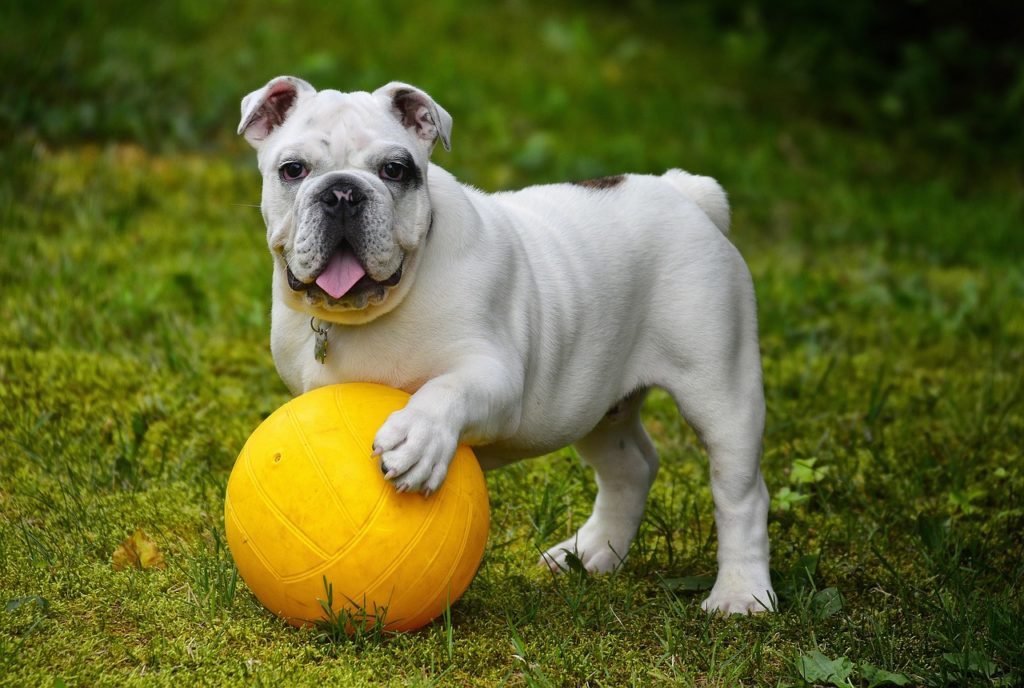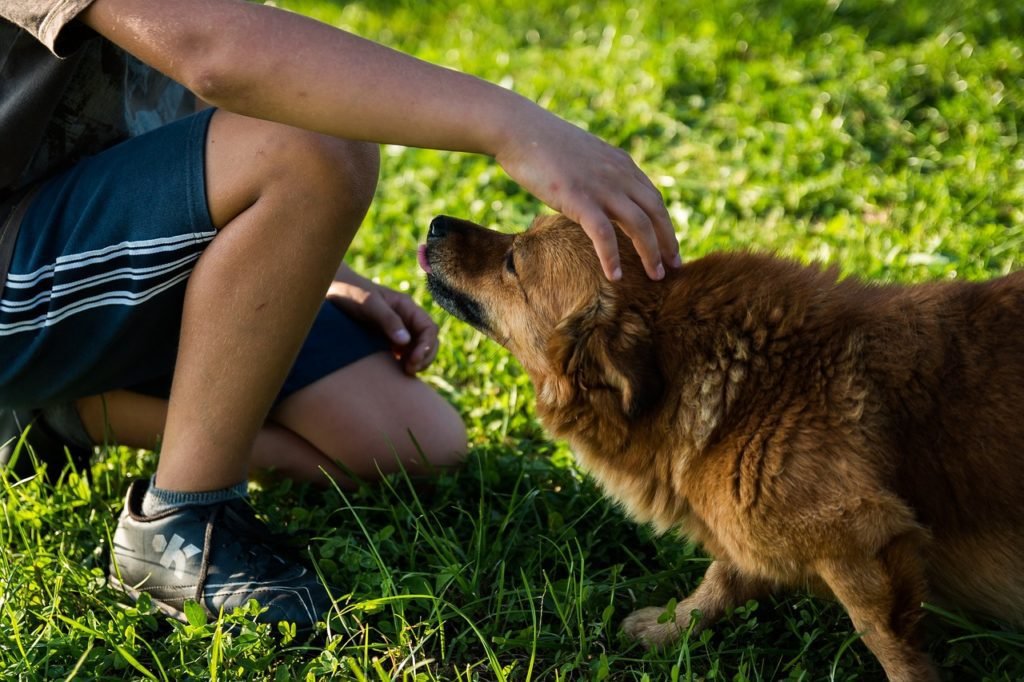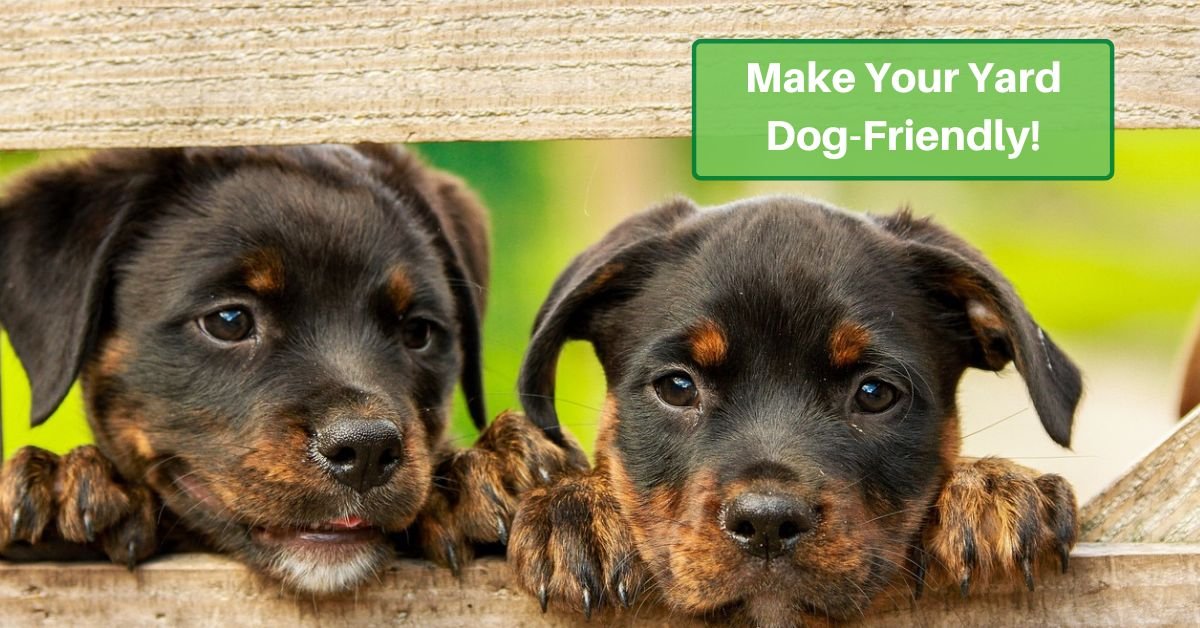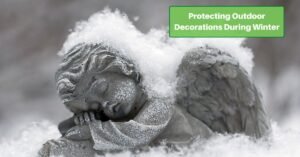It’s awesome to let your dog run around the yard! They love fresh air, open spaces, and sunshine. But to create a space that’s ideal for them takes a little planning. We’ll lay out here the basics of what you need for a dog-friendly lawn!
Check Your Fence
If you want to allow your dog to run around outside, you have to be sure they stay where they’re supposed to. And to do so, you need to have a good fence.
There are a couple of options here. You can use just about any kind of traditional fence, or you can opt for an invisible fence.
You also have to consider whether your pet will have the run of the whole yard or just a section. Be sure to give them enough space to run and enjoy themselves a bit, but if you have a large yard, you may decide to keep them in a part of it.
For most dogs, a six-foot-high fence is enough. With smaller dogs, a shorter fence may work. Remember, though, some dogs are adept at climbing, so chain link is usually a bad idea.
Be sure that the fence is sturdy and well-maintained. If it has posts or pickets, be sure the space between them is small enough that your dog can’t squeeze through.
Don’t forget, though, that some dogs like to dig. You want to make sure they can’t dig under your fence and escape! A concrete footer under the fence is a good solution although it can be tough to pour, especially for a long fence. You could also bury chicken wire at the base of the fence. Bury it about 2-3 inches below the surface at a right angle to the fence to frustrate Fido’s excavating attempts.
Keep in mind, too, that one reason a dog may want to get out is that she’s bored inside. Be sure to provide enough space as well as activities to hold their interest. You’ll see more ideas on this throughout the rest of this article!
The Right Grass
A good, tough grass will hold up to your dog’s pacing, play, and…well, his business. Kentucky Bluegrass is a good option if it works in your climate. It’s resistant to damage and will rebound well even after suffering from activity.
Clover is another good option. Synthetic grass is a possibility, but who wants that unless it’s necessary?
On Patrol
Some dogs naturally patrol their territory. If you see your dog walking around the edge of the fence, that’s not necessarily a bad thing. You can talk to your vet to find out if it’s normal for their breed.
However, that pacing isn’t good for the lawn itself, even with a durable species of grass.
To accommodate this behavior, you can add a “track” to the edge of your dog’s area. A strip of gravel or other material could be the perfect addition to keep both your dog and your lawn happy!

Safe Plants
Dogs aren’t picky eaters; they could eat anything – even if it’s not good for them. So it’s up to you to make sure they’re safe from anything that might harm them.
Unfortunately, that includes some common garden plants. All of these can be harmful to your dogs:
- Begonia
- Chrysanthemum
- Dahlia
- Hydrangea
- Iris
- Lily of the Valley
- Peony
This is not a comprehensive list, so be sure to know your plants, especially if it’s not something common!
Plenty of Shade
Yes, your dog will love to play and lay in the sun. But she’ll also need to get out from under it from time to time! Be sure that there is always a shady spot available – under a tree, beside the house, near a bush.
A great way to guarantee a cool, shady spot is a doghouse!
Lots to Drink
Be sure to leave enough water for your dog to enjoy, too! Whether it’s in a bow or you have some kind of water feature in the yard, they’ll need to stay hydrated.
It’s best to keep it in the shade so it stays cool and doesn’t evaporate too fast. However, we don’t recommend putting it under a tree or other place where birds might perch above it and leave their droppings.
Plenty of Play
We mentioned above that your dog may try to escape if it gets bored. So be sure to offer stimulating activities in the yard!
Some toys are helpful, but a ramp or platform they can jump on is also fun. You can create a whole pet playground if you’re so inclined! Just be sure not to put any raised surfaces near a fence; you don’t want to make it easier for them to get out!
Time Together
Play isn’t just with toys; make sure you offer time for your pet, too! Interacting with you in a fun way helps keep your dog happy and provides exercise. It can also help tire it out so it won’t have the energy to try to escape!

Keep It Clean
Of course, you want to keep the area clean. It’s important to keep on top of dog waste so that it doesn’t pile up. As long as you stay on top of it, it shouldn’t harm the grass.
It’s also helpful if you train the dog to do its business in just one area of the yard. That’ll save you time – and help prevent you from stepping in something you don’t want to.
Keep on the Grass – but off the Fertilizer
Fertilizer is great for your lawn, but it can burn your pet’s paws. And if they are curious and eat it, or freshly-fertilized grass, they can become seriously ill.
To keep your dog safe, don’t let it on the lawn for two to three days when you’ve fertilized. By that time, the fertilizer will be absorbed into the soil.
A Place To Dig
As we mentioned above, some dogs just love digging! If you’re able to provide them with a space where it’s ok to satisfy that urge, it can help spare the rest of your yard.
A deep sandbox is a great option. It will still take some time and training to teach your dog to use it, but it can also spare you from filling holes in other places!
Paw Prints?
Of course, all that time in the yard may lead to your pup tracking mud into the house.
If you worry about this, you can set up a doggie foot bath near the door. For a small dog, an old baby bathtub will work; a larger dog might need a small, hard-plastic kiddie pool. With some patience, your dog will learn to pass through it on their own before coming into the house!
Conclusion
Your dog will love the opportunity to enjoy the yard! It’s important to make sure it’s a safe, fun place, though. Be sure it can’t escape and has all it needs to be comfortable, including water, shade, and entertainment. You and your pet will love all that the back lawn can offer to keep it healthy and happy!









